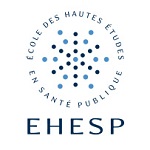The Associations Between Headaches and Psychopathology: A Survey in School Children
Abstract
Background: Headaches are common in childhood and significantly impact children's quality of life. On the contrary to the adolescent and adult population, there are few data on the associations between headaches and psychopathology in young children.
Objective: The aim of this study was to examine the relationships between child headaches, emotional and behavioral difficulties in children aged 6-11 years old.
Methods: A cross-sectional survey was conducted in 2004 in 100 primary schools from a large French region, with 2341 children aged 6-11 years old randomly selected. Child headache status, comorbid physical conditions, and socioeconomic characteristics were collected in parent-administered questionnaires. Child psychopathology outcomes were assessed using child- and parent-reported standardized instruments: respectively, the Dominic Interactive and the Strengths and the Difficulties Questionnaire. Associations were estimated using logistic regression models.
Results: Response rates to the parent questionnaire and the Dominic Interactive were 57.4% and 95.1%, respectively. The final sample size was 1308 children. Eleven percent of the children already experienced frequent headaches in their lifetime, with no difference by age or gender. Headaches were associated with parent-reported emotional problems (OR=1.76; 95% CI: 1.03-3.01) and self-reported general anxiety disorder (OR=1.99; 1.13-3.52). Comorbid physical conditions ≥2 appeared as an independent factor significantly associated with headaches (OR =1.75; 95% CI: 1.13-2.73). Inversely, low parental punitive behaviors were less frequently associated with headaches (OR=0.41; 95% CI: 0.18-0.94).
Conclusion: Our results suggest some associations between headaches, emotional disorders, and comorbid physical conditions in young children aged 6-11 years old. Those results should be considered in the treatment approaches of childhood headaches and from the etiological aspect.
